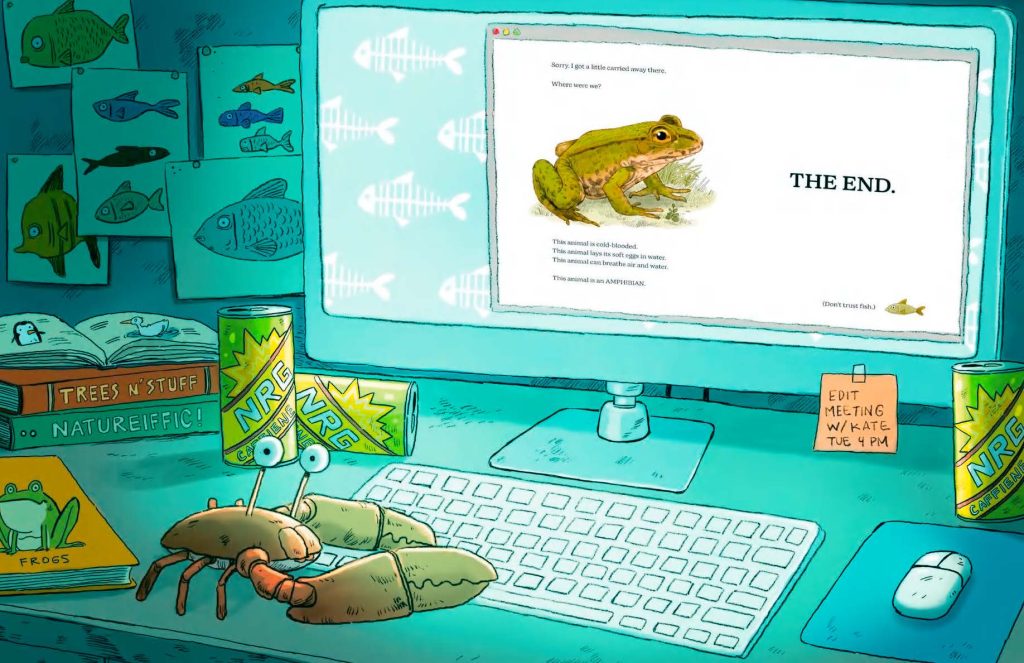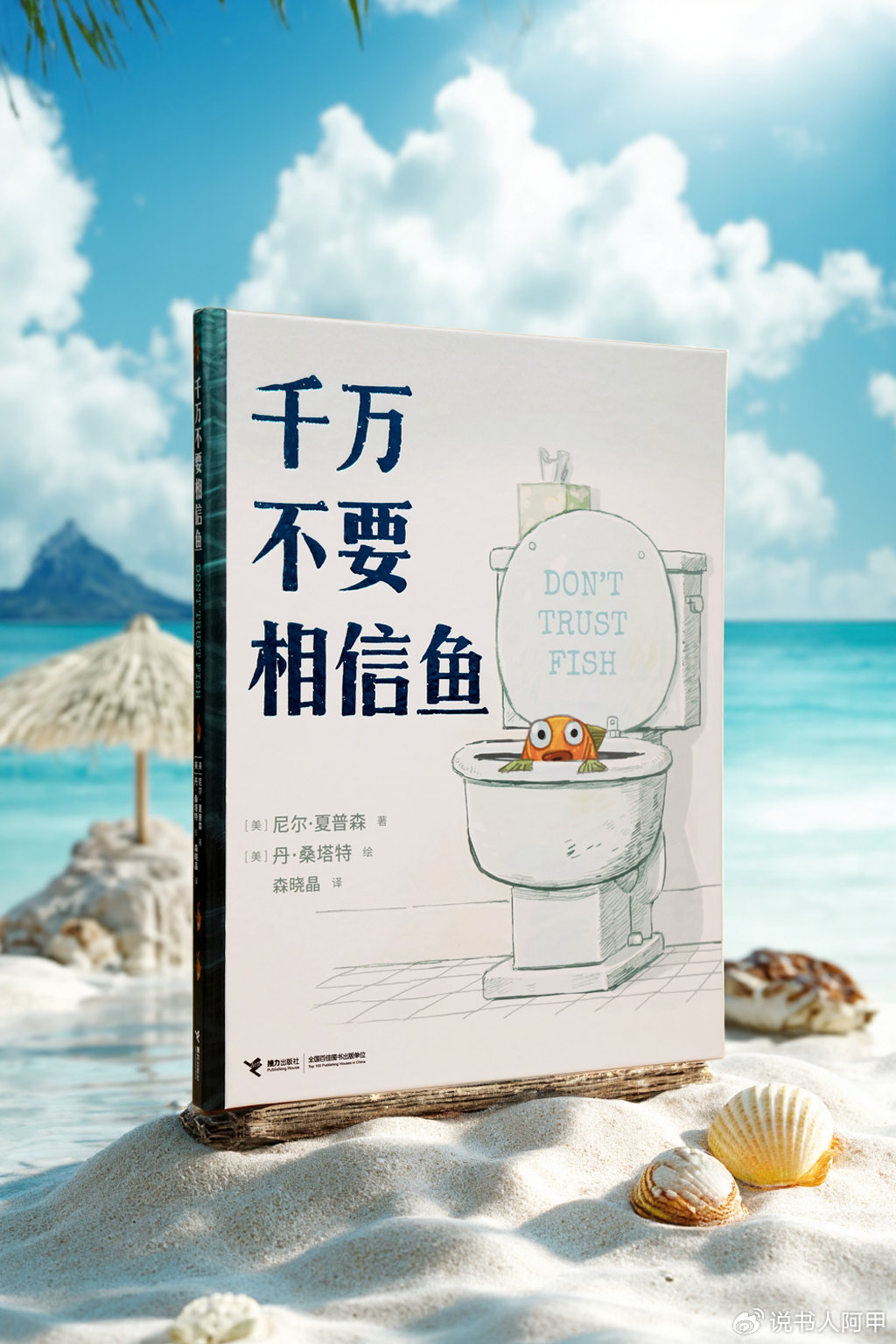In an age of information overload—where opinions flood every corner of our screens—what do you do when someone insists, “Whatever you do, don’t trustX”, Do you believe them? Or not? Have you ever found yourself on the verge of trustingX or Y,only to be hit by a sudden twist… then a twist on the twist… then a twist on the twist of the twist? So when you open a brand-new picture book titled Don’t Trust Fish, the question practically leaps off the cover: Should you trust it? Or not?
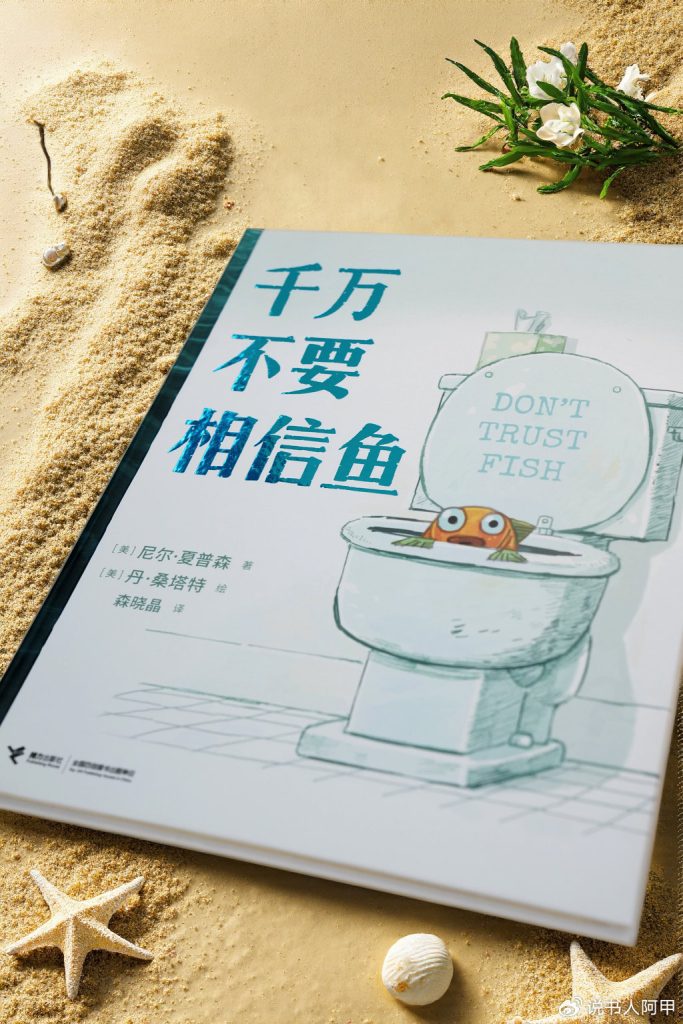
I had the chance to read a digital preview of this book before its global release, and interestingly enough, even before its official publication date—April 8, 2025 (exactly seven days after April Fools’ Day!)—the book has already made waves among early readers. Thanks to its sharp humor, unexpected reversals, and sheer originality, it has garnered glowing advance praise from casual readers and professional reviewers alike. People are celebrating the book’s inventive spirit, especially its bold use of an unreliable narrator, which delivers deliciously dark humor wrapped in a child-friendly package. But what makes this book truly stand out is how its creators subtly weave in elements of science literacy and media awareness, turning what looks like a simple picture book into something far more layered. For readers eager to discover what picture books can really do, this is the kind of title that makes you sit up and pay attention.
A Powerhouse Creative Duo
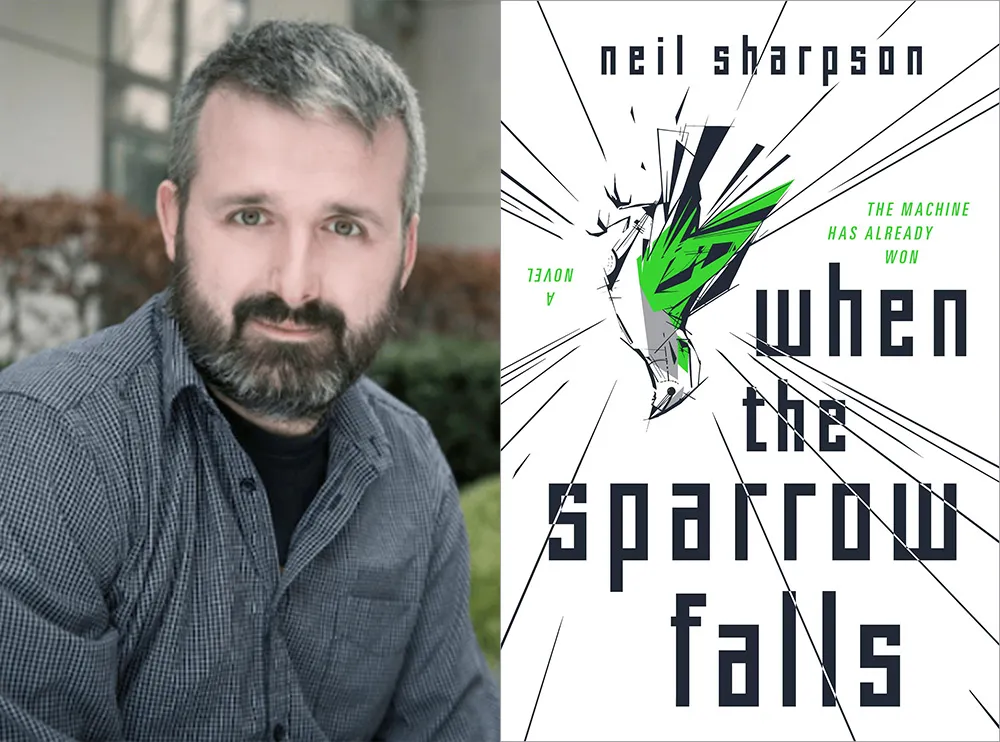
The author of the text, Neil Sharpson (b. 1983), may be a newcomer to the world of children’s books—Don’t Trust Fish is his very first picture book—but he’s no stranger to storytelling. A seasoned playwright and science fiction novelist, Sharpson has already earned recognition in Ireland and abroad for his work for adult audiences. Since 2012, he’s also maintained a prolific blog (unshavedmouse.com) focused on animated films and pop culture critique, showcasing his deep passion for visual storytelling. On top of that, he’s a father of two and a devoted bedtime reader, with plenty of picture-book hours under his belt. You can feel that accumulated narrative intuition in every twist of this book.

Illustrator Dan Santat (b. 1975), by contrast, is a giant in the children’s book world. With over 100 books to his name—including picture books, graphic novels, and middle-grade fiction—he’s best known for picture bookThe Adventures of Beekle: The Unimaginary Friend-(in Chinese named 《小白找朋友》)won the 2015 Caldecott Gold Medal, and his graphic memoir A First Time for Everything, which took home the 2023 National Book Award for Young People’s Literature. Santat’s work is unmistakable: bold colors, dynamic compositions, expressive lines, and a cinematic sense of timing and emotion. But what sets him apart is his ability to tap into a child’s perspective—with empathy, with energy, and with an eye for absurdity. He’s also a dad, and Beekle, in fact, is named after a made-up word invented by his own son. That same playful spirit and intuitive understanding of how kids think pulses through every image he creates.
In Don’t Trust Fish, it’s the fusion of Sharpson’s irreverent wit and Santat’s visual exuberance that makes the humor land so perfectly. This isn’t just a funny book—it’s a smart, layered one, where every joke is doing double duty: making you laugh and making you think. Especially through Santat’s illustrations, which amplify the absurdity of the fishy world they depict, the book becomes a delightfully strange and surprisingly insightful read.
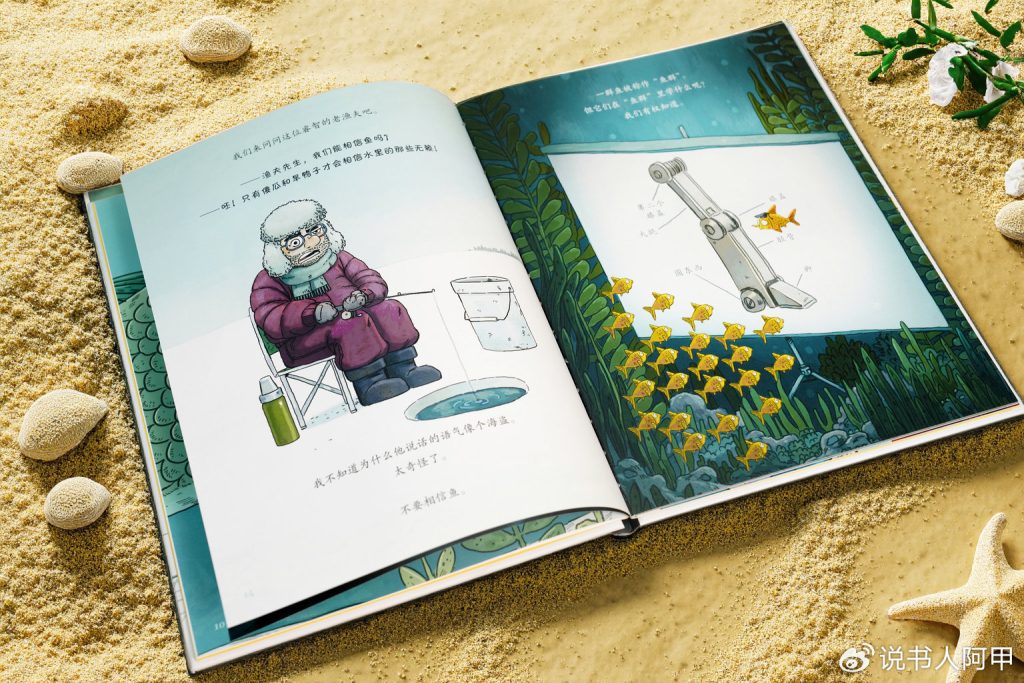
From Science Facts to Sci-Fi Suspicion: A Genre-Bending Twist
This book might give even the most organized librarian a bit of a headache: where exactly do you shelve it? At first glance, Don’t Trust Fish looks like your classic nonfiction title—an animal primer, no less. It starts with textbook-like seriousness, guiding young readers through the familiar categories of mammals, reptiles, and birds. Then it naturally transitions to marine life… until the fish arrive. That’s when things take a sudden, spectacular turn. The tone shifts. The color palette explodes. The narrative jumps the rails and careens into something part science fiction, part mystery, part espionage thriller—and maybe even a little true crime. And throughout it all is a constant refrain: Don’t trust fish. Don’t trust fish. Don’t trust fish. It echoes like a hypnotic chant, growing louder and more insistent. According to the old rule of propaganda—“repeat a lie often enough, and it becomes the truth”—this one’s got us hooked.
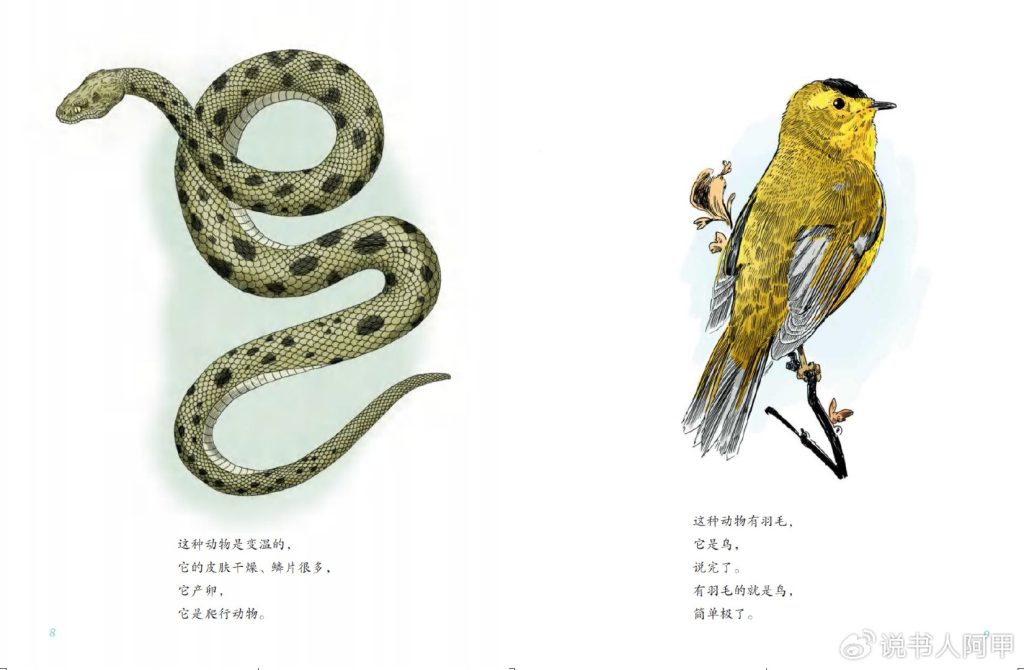
The narrator (whom sharp-eyed readers might spot lurking in the illustrations) begins in the voice of a respectable science educator. But there’s something fishy going on. The voice becomes increasingly manic, increasingly paranoid, until we’re no longer sure if this is a lecture or a conspiracy theory. The narrator, possibly a cute little sea creature themselves, lays out a case against fish that is both utterly ridiculous and disturbingly plausible. Fish, we’re told, are not to be trusted. They’re sneaky. They’re always watching. They hide their intelligence. They live underwater, which makes them ideal spies. The book takes us into an imagined fish society—one with surveillance operations hidden in goldfish bowls and toilet tanks, where schools of fish literally go to “school” to study the human body and discover our shameful addiction to pie. One of the most compelling pieces of evidence? “Ships always sink at sea. They never sink on land.” (Try arguing with that!)
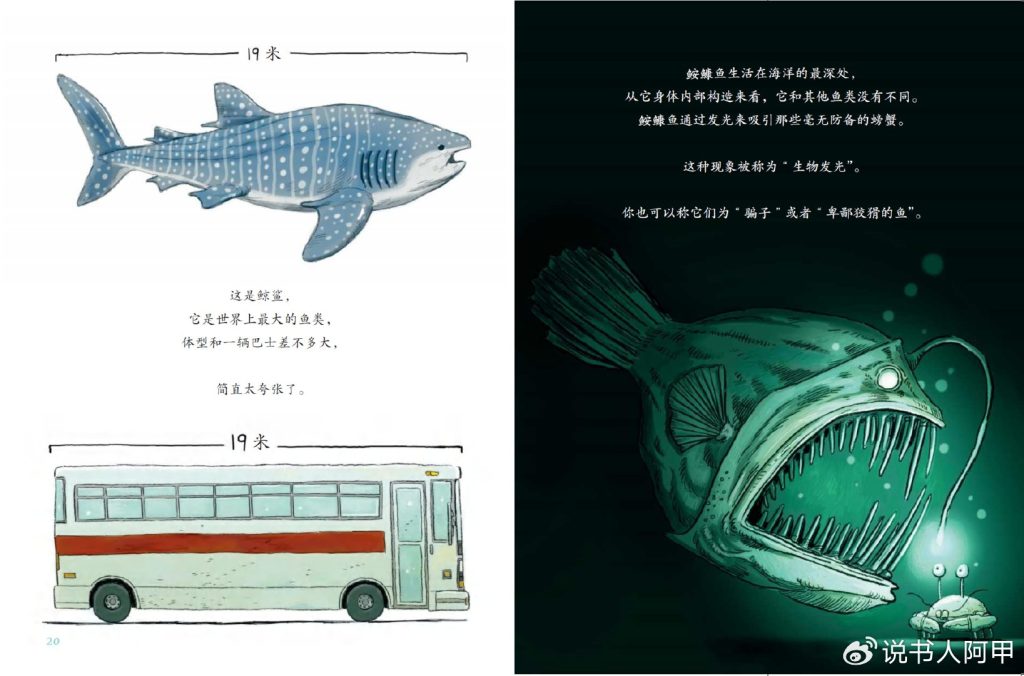
Through this bizarre, deadpan narration, the reader is pulled into a world where logic has been cleverly twisted and everything is suddenly up for debate. Do we really know what fish are up to? Are they planning something? What else have we been told that might not be true? This is where Don’t Trust Fish moves beyond the bounds of a typical children’s book. It’s not just a funny story—it’s a genre-defying, mind-bending piece of satire. With every page turn, it leads readers further into absurdity, until they’re questioning not just fish, but the nature of knowledge, truth, and the stories we choose to believe.
Dealing a Wild Hand: The Power of the Unreliable Narrator
One of the defining features of Don’t Trust Fish is its use of an unreliable narrator—a storytelling device that gleefully tosses out the rulebook. It’s hard not to think of Jon Klassen’s This Is Not My Hat, a Caldecott and Greenaway Medal winner, where a tiny fish insists—insists!—that the hat it stole is now safe and sound on its head… all while Klassen’s illustrations quietly (and hilariously) tell another story entirely. That mismatch between what’s said and what’s shown creates a delicious tension that readers love to decode. Whether or not Sharpson and Santat were directly inspired by Klassen, their approach taps into the same visual-verbal dissonance with equally brilliant effect.
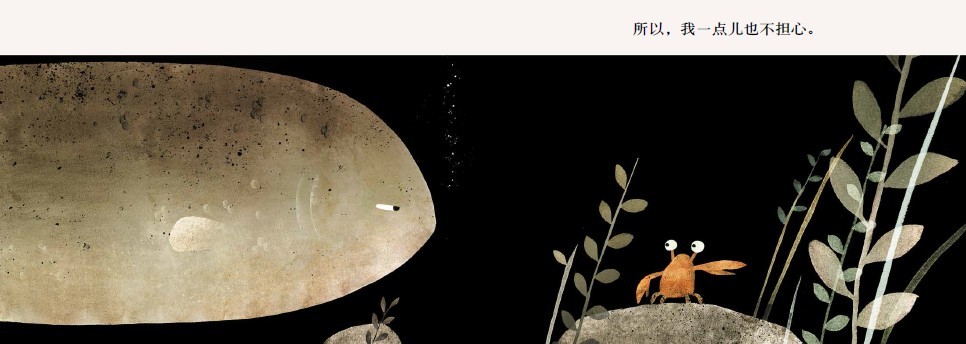
From the beginning, readers of Don’t Trust Fish are dropped into a world that feels factual but is, in fact, increasingly absurd. The narrator warns us not to trust fish and proceeds to offer “evidence” that ranges from plausible to preposterous: their unpredictable behavior, their deceptive appearances, their watery home that allows them to sneak around unnoticed. With growing paranoia disguised as authority, the narrative spirals into something halfway between a nature documentary and a conspiracy podcast.
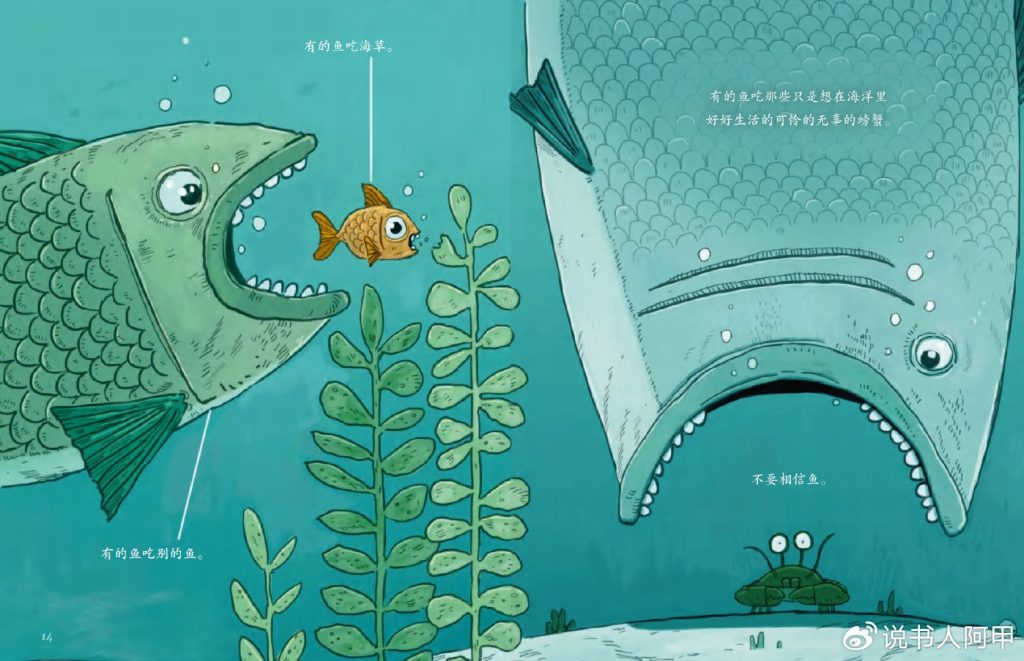
This unreliable narration is elevated—supercharged—by Dan Santat’s illustrations. His artwork doesn’t just support the text; it undercuts, exaggerates, or wildly expands on it. When the narrator describes fish with bioluminescence, for example, Santat shows a deep-sea anglerfish luring in its prey with eerie, glowing bait. The scene is equal parts grotesque and hilarious. But the real kicker might be the poor, gullible little crab who falls for the trick—innocent, wide-eyed, defenseless… and, just maybe, not so innocent after all. (Fans of Klassen will recall his own meddlesome crab in This Is Not My Hat—coincidence?)
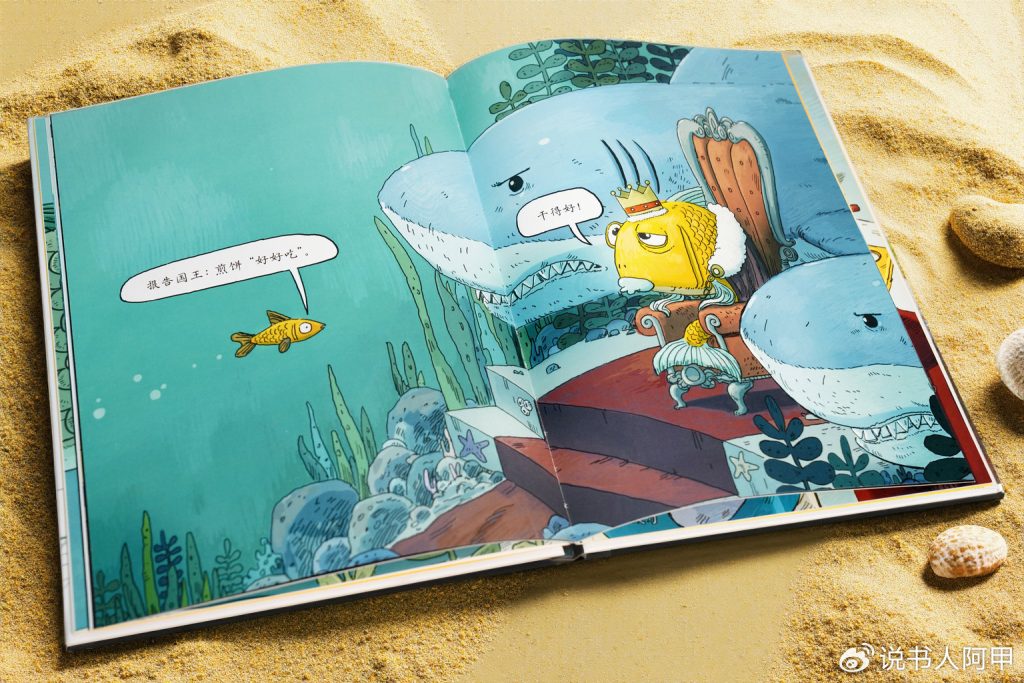
However, despite the extremely humorous tone of the story, there is a subtle irony behind it about information asymmetry and blind trust. Through the exaggerated depiction of the “fish conspiracy”, the story may actually be a criticism of the excessive informatization, the spread of false information and the “pictures are the truth” thinking in our modern society. In the Internet age, especially with the rise of AI technology, the reliability of graphic information is often questioned, and the “fish” in the book is a symbol of this — they seem real, but behind them are full of uncertainty, and even imply falsehood and deception.
As the old Chinese proverb goes, “If you believe everything in books, better to have no books at all.” In today’s world, perhaps that applies to images, too: “If you believe every picture, you may as well have no pictures.” Which raises a tantalizing possibility:Could this be a picture book warning you not to believe picture books?Well, this seems to be a picture book that reminds readers “Don’t trust picture books too much”? !
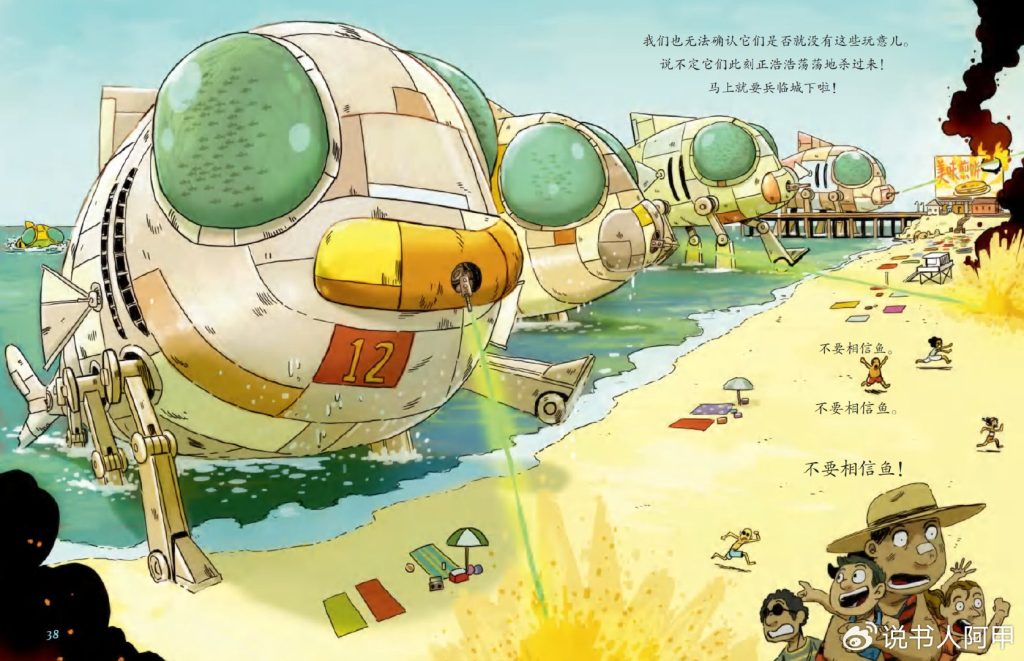
Challenging Norms with Critical Thinking
It seems clear that the use of an unreliable narrator in Don’t Trust Fish is not simply a gimmick or a joke. Rather, it’s a deliberate choice to explore the unique possibilities of the picture book form. One of the greatest strengths of picture books lies in the interplay between text and image—and this book cleverly uses that dynamic to emphasize the unreliability of information itself. As we enter the age of AI, the question of truthfulness in the information we receive becomes more critical than ever. Children today are exposed to an overwhelming amount of misinformation and exaggerated “facts.” Learning to evaluate what is true, and developing the ability to think critically and calmly in the face of uncertainty, are essential skills they need to build.
The unreliable narrator is an effective narrative device to teach this. Through a tone that seems serious at first, paired with exaggerated and absurd logic, and reinforced by repeated twists and turns (some of which await the reader’s own discovery), the book becomes not just a humorous read but a mental exercise. It challenges the authority of the book itself. And in doing so, it helps young readers realize that anything—any “truth”—can be questioned, re-examined, and deconstructed. This reflective kind of humor is one of the book’s most powerful traits.
Unlike standard school textbooks, picture books often thrive on the idea that “there is no single correct answer.” Every reader may see things differently—and that’s okay.After all, real life rarely comes with neat answers. Still, most books try to persuade the reader that their story might be believable, or at least possible. Don’t Trust Fish goes a step further:Don’t even trust this book too much!- This is indeed a valuable reminder for today’s times:Don’t trust any information easily, no matter where it comes from, even from books.For everything, we must find a way to trace the source, to see who said it, what the basis was, and why they said it that way…and all of this is conveyed to young readers through clever narrative structure, humorous illustrations and highly creative content, this important survival wisdom in the AI era.

A Story That Refuses to End Easily
So now, impatient readers might be dying to know: What’s the real truth behind Don’t Trust Fish? —Sorry, no spoilers here. That would be like revealing the murderer in a detective story before anyone has read the final chapter. But I can give you a clue: when this picture-book-turned-detective-thriller flashes “The End” on its final page… don’t believe it either. Don’t leave your seat. Don’t rush to the bathroom. Stay for the credits—because yes, the “culprit” is hidden in the postscript! Even then, don’t close the book too quickly. Look at the dedication page: a big fish is swallowing a smaller fish. Why? And who is Elsa Fowley-Doyle, to whom the book is dedicated? Could she be connected to Arthur Conan Doyle in some clever, tongue-in-cheek way?
By traditional picture book standards, this is an odd book—it brings together a whole mix of rarely-seen elements. But you could also say it’s a rare gem: a book that is fun, funny, and thought-provoking, with plenty to say to readers of all ages. If you enjoy picture books that break rules, tickle your brain, and speak directly to our times, Don’t Trust Fish is not to be missed.
Of course… you don’t have to take my word for it. After all, I’m just the storyteller -Ajia ……
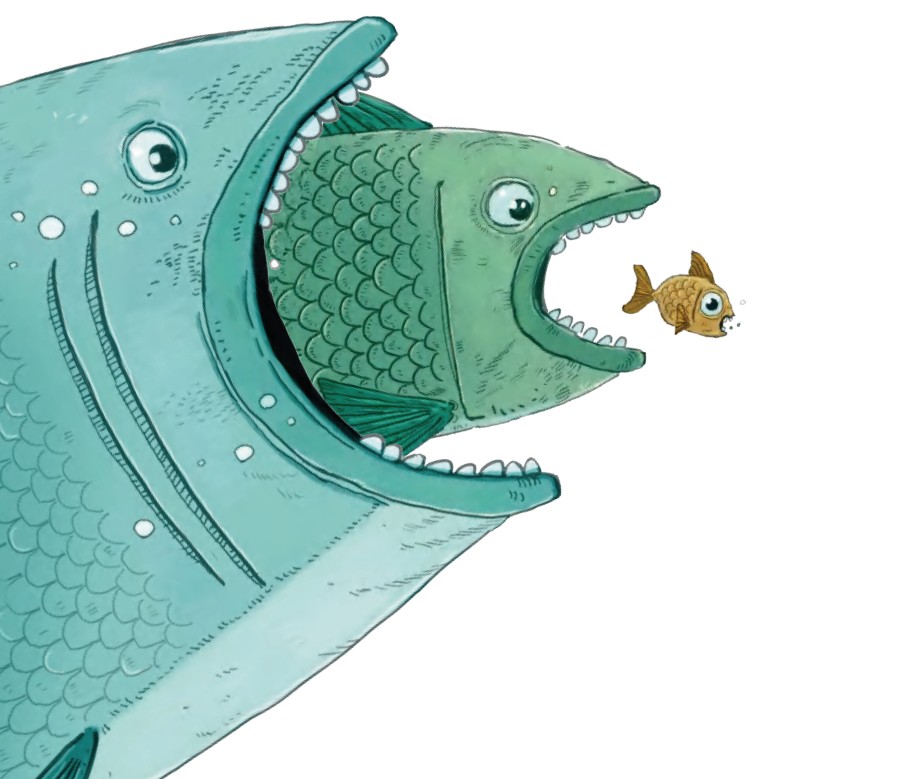
- Ajia (Written on the third day after April Fool’s Day, 2025)
